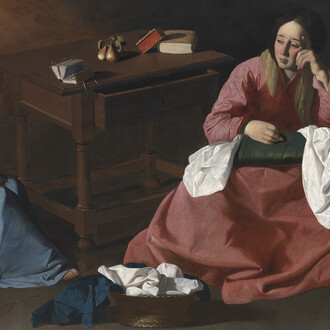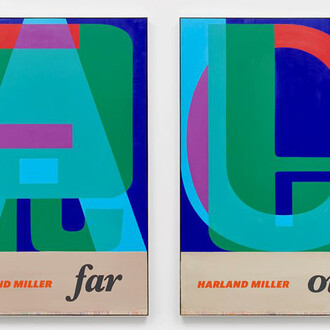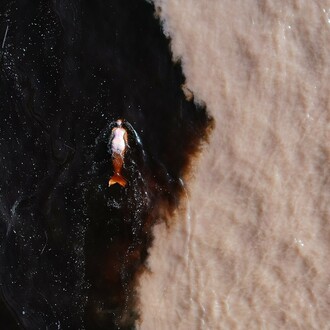People try to put us down (Talkin' 'bout my generation)
- The Who, 'My generation', (1965) (1)
Gustave Courbet once stated that he was 'not only a Socialist, but a Democrat and a Republican, as well: in a word, a supporter of the whole revolution, and above all a realist, that is to say a sincere lover of genuine truth' (2).
In T. J. Clark’s book 'Image of the People’ (1999), Courbet is said to have disguised himself behind the mask of ‘the savage’ in order to remain in the centre of the Parisian art world without actually being absorbed by it. Acting as rustic invader and outsider to La Brasserie Andler, which he frequented in the 1840's, he sustained his painting practice by gaining access to this glimpse of bourgeoisie life, to enable himself to comment on the social conditions of the time through his paintings of rural life. In Clark’s book, he asks us to question, 'What is revolutionary art?' - such as Courbet's - and 'What were the effects of a particular revolution upon creative practice?'.
The term 'Anti-Social Realism', which acts as this exhibitions title, is not one that is commonly understood. It is intended to pose questions such as: is 'revolutionary' art a viable possibility today? What does it mean to be (anti) social in an increasingly interconnected but physically separated society? Can we, through archaic practices such as painting and sculpture, engage with notions of 'social realism’ now presented on a daily basis through the new silver-screen veneer of the digital age?
In response, this exhibition attempts to pose pictorial possibilities and create tensions through the selected artworks, tackling notions of contemporary realism and in turn offering us a distant echo of a political reality. The wry misnomer of the exhibition title slips between many interwoven threads, simultaneously conjuring up images of 'anti-social behaviour orders' (ASBO), anarchist riots, or the solitary artist locked away from the world attempting to connect on a higher level. In this light, the exhibiting artists are presented as 'social mystics' (3) and it could be said that their work operates by a means of turning inwards to create social radiation.
It is often said that the path of artistic practice involves an inherent rejection of the exterior world. This service to humanity, whilst in rejection of it, is a contradiction that the exhibition also seeks to examine. There is a shared intention to address the contemporary political dilemma and our complex relation to reality through the conventions of art practice and the governing notions of social realism, such as those that existed in Courbet’s time.
J.G. Ballard refers to the ‘inter-zone’ (4) as an attempt to define contemporary reality from within the simulacrum of the digital age. By inhabiting this pneumatic intermediary realm, made of astral substance, cultural production posits between the rational mind (which partook of God) and the utterly unrelated material realm.
Here, the painted world often seems more real than the real; reality at times populated by phantasms, cartoon characters or surrealist totems. The programme of political resistance is directly linked to the imagination, like projections charged with nervous afflictions, allergic reactions and insecurities brought on by Facebook updates and online monitoring by government security agencies.
The other worldliness of social media and the ever present threat to notions of reality of the digital age (where almost everything and anything seems possible) defines our reality, and by that definition what it means to pursue social and anti-social practices - artistically and behaviourally in the age of this ‘inter-zone’.
The search for a means to connect is one that remains today, much like in Courbet's times, and the desire to present the enigma of peasant politics with the confusions and dangers of class systems continues. Today, as we face echoes of the great depression - when economic turbulence fostered a heightened sense of social consciousness - these artists are banded together in their conviction that art must remain intrinsically social, whilst preserving a duty to question the binds of the social structures it exists within. Juan Bolivar & John Stark
Notes
1 Pete Townshend reportedly wrote the song on a train and is said to have been inspired by the Queen Mother who is alleged to have had Townshend's 1935 Packard Hearse towed off a street in Belgravia because she was offended by the sight of it during her daily drive through the neighbourhood. Townshend has also credited Mose Allison's 'Young Man Blues' as the inspiration for the song, saying 'Without Mose I wouldn't have written "My Generation"'.Townshend told Rolling Stone Magazine in 1985 that '"My Generation" was very much about trying to find a place in society.' http://en.wikipedia.org/wiki/My_Generation
2 Pierre Dupont BAC (quote source) - ‘Image of the People: Gustave Courbet and the 1848 Revolution’ - T. J. Clark, 1999
3 'Mystics are persons in society, even if hermits or cloistered monks or nuns. They speak the language of their society, eat the the common foods, are immersed in the day-to-day cultural mores of their time and place. However, they are not in society as everyone else of their time and age is, but persons with a particular "social radiation".' - 'Great Mystics and Social Justice: Walking on the Two Feet of Love' - Susan Rakoczy (Page 192)
4 'I define Inner Space as an imaginary realm in which on the one hand the outer world of reality, and on the other the inner world of the mind meet and merge. Now, in the landscapes of the surrealist painters, for example, one sees the regions of Inner Space; and increasingly I believe that we will encounter in film and literature scenes which are neither solely realistic nor fantastic. In a sense, it will be a movement in the inter-zone between both spheres.' - J.G Ballard



















